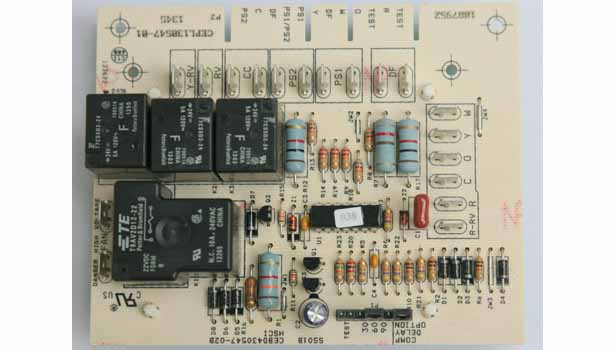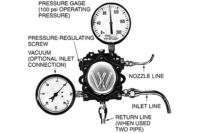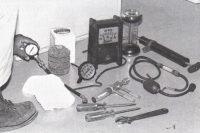Bob is a service technician who is well trained and nationally certified. However, he has sometimes suffered from the same confusion that all technicians occasionally do — the facts that he gathers may or may not point to the obvious cause of the problem or the best solution. But Bob has had something that no one else has. He recalled his long-time HVACR mentor and imagines him accompanying him as “Btu Buddy,” someone who reminded him to take time to stop and think before rushing to judgment, helping keep him on the right track, even with facts that are confusing.
Now, Bob’s company has promoted him to help train a new employee, right out of a school specializing in HVAC, just like Bob was. Bob is now Tim’s Btu Buddy. Tim is anxious to travel with Bob. Tim realizes that he is right out of school, with the theory and lab work that he accomplished in school, but still needs help. He knows that he worked with many of the components of the systems in the school, under ideal conditions with good light and air conditioning. Now it is into the field, sometimes under the house with poor lighting, or out on the rooftop in the sun, where the real action is. He is naturally and normally reluctant, but he has Bob to help guide him.
Bob and Tim were on their way to a no cooling call; in fact, it sounded like a heating call. The customer has a bonus room in their house that is on the third floor and used for making crafts. The room used to be attic space and it had been enclosed, insulated, and air conditioned. When Bob and Tim arrived, the customer told them, “The bonus room upstairs seems much too hot and the air coming out of the registers is hot to the touch. The housekeeper discovered it this morning.”
Bob, Tim, and the customer went upstairs to the room and Tim said, “Boy, it sure is hot. This seems hotter than just an attic room. Look at the thermometer in the thermostat. It is reading off the scale.”
Bob went to the air register to feel the air and said, “This air is really hot. I believe the heat pump is in the heating mode. Tim, go to the outdoor unit and see what the unit is doing.”
Tim left and went around the house to check. After checking, he hurried back to the attic and said, “The unit is putting out cold air. I am going to shut it down. It is running in the heating mode for some reason.”
Bob said, “That is really hard on a compressor. It is taking heat out of a 90°F outdoor temperature and it is hot. That is overloading the compressor. I am surprised that the compressor would run under these conditions. I bet the compressor is shutting off because of overload every few minutes. I believe that you caught it at just the right time between overload off cycle operation.”
Tim asked, “How can we troubleshoot the unit if we cannot run the unit?”
Bob said, “That is a good question. Tell me what you think the problem might be.”
Tim responded, “The four-way valve may not be changing over to cooling because it is physically stuck or it may not be getting the signal to change over. The signal could come from either the thermostat or the condenser fan relay. The valve coil could also be burned out. I wonder if the valve is energized in the summer or winter cycle?”
They looked over the wiring diagram and Bob said, “It is energized in the summer cycle. I really would like it energized in the winter cycle because when it fails, you can usually deal with too much heat in the winter better than in the summer. When a system fails safe to heat in the summer, it really puts a lot of stress on the compressor. Remember, the outdoor coil is much larger than the indoor coil and when the valve fails to the heating mode in the summer, the oversized outdoor coil really overloads the compressor. Let’s see if we can find out why the valve doesn’t change over.”
Tim asked, “How are we going to determine that?”
Bob said, “With the system off, let’s go to the outdoor unit and see what we can see about the valve.”
They removed the control panel and took the top off of the unit so they could get to the valve. Bob said, “See what the valve coil feels like. If the coil has been energized, the coil should be hot.”
Tim felt the coil and said, “The whole valve is hot, as it would be during that hot cycle. The electrical coil does not seem very hot, though.”
Bob said, “Let’s jump out the circuit to see if the valve is energizing. Jump from the “R” terminal to the “O” terminal, that should make the valve energize.”
Tim made the jumper connection and said, “I didn’t hear anything.”
Bob then said, “Follow the wire from the four-way valve to the circuit board and jump from the “R” terminal to the wire leading to the four-way valve and see what happens. Be sure to remove the wire from the terminal so there will be no chance of feedback into the circuit board.”
Tim made that jumper connection and they both heard the valve solenoid coil energize the valve plunger.
Bob said, “Leave that jumper in place and start the unit. We will see if the valve is changing over into the cooling cycle.”
Tim put the top back on the unit and went into the house and started the unit. The unit started cooling. Bob asked, “What do you think the problem is?”
Tim said, “The valve coil is not getting the signal to go into cooling, for sure. The wire feeding the valve comes from the circuit board, so I would say that the circuit board is not allowing the valve to change over to cooling. We should change the circuit board.”
Bob said, “You are correct. Let’s see what it takes to get a circuit board.”
They made a phone call and found out that the supplier did not have one in stock and could not get one until Monday and it was Thursday. The owner had said that she needs to use the room on Friday for a craft workshop. Tim asked, “What are we going to do to get her the cooling she needs for tomorrow?”
Bob said, “We can leave the jumper on the unit until we can get a circuit board to install next week. The unit is safe with the jumper. The only thing is that it cannot be used for heating, which they will not need for at least a month. Let’s close up the control compartment and tell the owner what we did and come back next week with a new circuit board. We will install the new board and run the unit in cooling and heating to be sure.”
On Tuesday of the next week, they returned with a new circuit board and installed it, and ran the unit in both heating and cooling. It all checked out.
Tim said, “Well, that job was an exercise in troubleshooting and a practical solution for the homeowner; they had cooling when needed and a repair at a later time. I guess some technicians would have just turned the unit off with no cooling until the part came in. That was good thinking.”
Bob said, “One way to keep a customer is to accommodate their needs and let them know that you did some extra thinking and gave them extra help. The cost to the customer was the same, no matter which way we solved the problem. The customer just got more service for the same price.”
Publication date: 8/18/2014
Want more HVAC industry news and information? Join The NEWS on Facebook, Twitter, and LinkedIn today!











